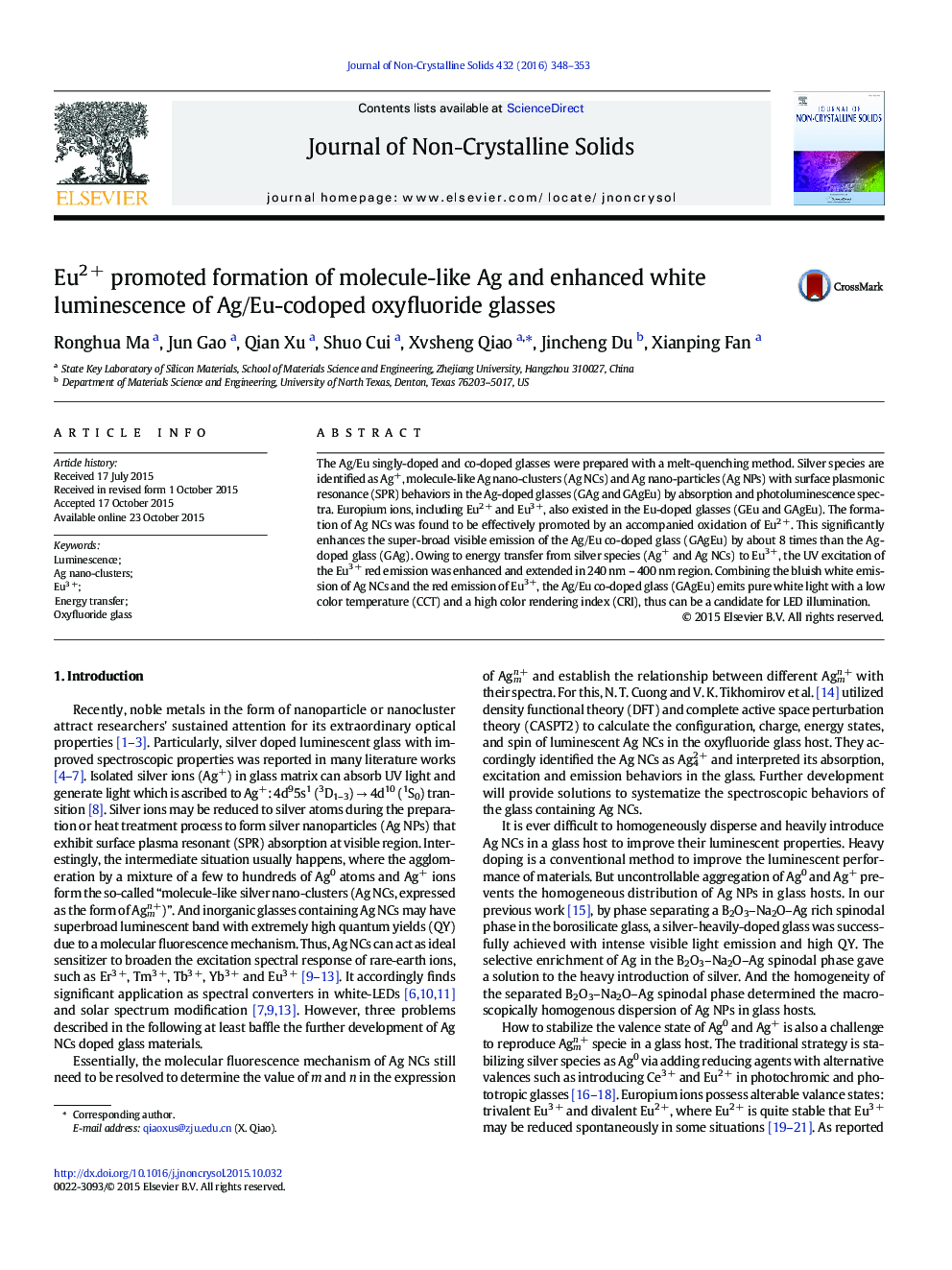| کد مقاله | کد نشریه | سال انتشار | مقاله انگلیسی | نسخه تمام متن |
|---|---|---|---|---|
| 1480425 | 991462 | 2016 | 6 صفحه PDF | دانلود رایگان |

• Ag was dispersed homogenously in the glass.
• Eu2 + promoted the formation of ML-Ag and Ag NPs.
• ET from ML-Ag enhanced the Eu3 + red emission and broadened its excitation.
• The Eu/Ag-doped glass emitted warm white light with low color temperatures.
The Ag/Eu singly-doped and co-doped glasses were prepared with a melt-quenching method. Silver species are identified as Ag+, molecule-like Ag nano-clusters (Ag NCs) and Ag nano-particles (Ag NPs) with surface plasmonic resonance (SPR) behaviors in the Ag-doped glasses (GAg and GAgEu) by absorption and photoluminescence spectra. Europium ions, including Eu2 + and Eu3 +, also existed in the Eu-doped glasses (GEu and GAgEu). The formation of Ag NCs was found to be effectively promoted by an accompanied oxidation of Eu2 +. This significantly enhances the super-broad visible emission of the Ag/Eu co-doped glass (GAgEu) by about 8 times than the Ag-doped glass (GAg). Owing to energy transfer from silver species (Ag+ and Ag NCs) to Eu3 +, the UV excitation of the Eu3 + red emission was enhanced and extended in 240 nm – 400 nm region. Combining the bluish white emission of Ag NCs and the red emission of Eu3 +, the Ag/Eu co-doped glass (GAgEu) emits pure white light with a low color temperature (CCT) and a high color rendering index (CRI), thus can be a candidate for LED illumination.
Journal: Journal of Non-Crystalline Solids - Volume 432, Part B, 15 January 2016, Pages 348–353